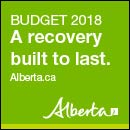- News Front Page
- Uncategorized
- Headline News
- Filipino Calgarian
- Business
- Pinoy Stories
- Community News
- Publisher's Note
- The Main Ingredient
- Views and Opinions
- Maikling Kwento
- Alberta News
- OFW – Month
- Travel News
- Health and Lifestyle
- Pinoy Toons
- Pinoy Spirit
- Entertainment
- The Philippine Lawyer
- Horoscope
- Greetings
- About Us
- Greetings From the Prime Minister
- Greetings from the President of the Philippines
- Greetings from the Premier of Alberta
- Greetings from the Mayor of Calgary
- Advertise With Us
- Disclaimer
- Subscription
Publisher's Note
- Publisher’s Note
 Hello dear readers,
Time flies so fast when life is so busy. 24 hours in a day is not enough for most people with all the things that they have to deal with in a day. But we should never forget that we should get at least 8 hours of sleep at night in order to [...]
Hello dear readers,
Time flies so fast when life is so busy. 24 hours in a day is not enough for most people with all the things that they have to deal with in a day. But we should never forget that we should get at least 8 hours of sleep at night in order to [...]
Visitors to Pinoytimes
Page added on July 28, 2018
Anxiety

Feeling worried or nervous is a normal part of everyday life. Everyone frets or feels anxious from time to time. Mild to moderate anxiety can help you focus your attention, energy, and motivation. If anxiety is severe, you may have feelings of helplessness, confusion, and extreme worry that are out of proportion with the actual seriousness or likelihood of the feared event. Overwhelming anxiety that interferes with daily life is not normal. This type of anxiety may be a symptom of generalized anxiety disorder, or it may be a symptom of another problem, such as depression.
Anxiety can cause physical and emotional symptoms. A specific situation or fear can cause some or all of these symptoms for a short time. When the situation passes, the symptoms usually go away.
Physical symptoms of anxiety include:
- Trembling, twitching, or shaking.
- Feeling of fullness in the throat or chest.
- Breathlessness or rapid heartbeat.
- Light-headedness or dizziness.
- Sweating or cold, clammy hands.
- Feeling jumpy.
- Muscle tension, aches, or soreness (myalgias).
- Extreme tiredness.
- Sleep problems, such as the inability to fall asleep or stay asleep, early waking, or restlessness (not feeling rested when you wake up).
Anxiety affects the part of the brain that helps control how you communicate. This makes it harder to express yourself creatively or function effectively in relationships.
Emotional symptoms of anxiety include:
- Restlessness, irritability, or feeling on edge or keyed up.
- Worrying too much.
- Fearing that something bad is going to happen; feeling doomed.
- Inability to concentrate; feeling like your mind goes blank.
Anxiety disorders
Anxiety disorders occur when people have both physical and emotional symptoms. Anxiety disorders interfere with how a person gets along with others and affect daily activities. Women are twice as likely as men to have problems with anxiety disorders. Examples of anxiety disorders include panic attacks, phobias, and generalized anxiety disorder.
Often the cause of anxiety disorders is not known. Many people with an anxiety disorder say they have felt nervous and anxious all their lives. This problem can occur at any age. Children who have at least one parent with the diagnosis of depression are more than twice as likely to have an anxiety disorder than other children.
Anxiety disorders often occur with other problems, such as:
- Mental health problems, such as depression.
- Substance use problems.
- A physical problem, such as heart or lung disease. A complete medical examination may be needed before an anxiety disorder can be diagnosed.
Panic attacks
A panic attack is a sudden feeling of extreme anxiety or intense fear without a clear cause or when there is no danger. Panic attacks are common. They sometimes occur in otherwise healthy people. Panic attacks usually last only a few minutes, but an attack may last longer. And for some people, the anxiety can get worse quickly during the attack.
Symptoms include feelings of dying or losing control of yourself, rapid breathing (hyperventilation), numbness or tingling of the hands or lips, and a racing heart. You may feel dizzy, sweaty, or shaky. Other symptoms include trouble breathing, chest pain or tightness, and an irregular heartbeat. These symptoms come on suddenly and without warning.
Sometimes symptoms of a panic attack are so intense that the person fears he or she is having a heart attack. Many of the symptoms of a panic attack can occur with other illnesses, such as hyperthyroidism, coronary artery disease, or chronic obstructive pulmonary disease (COPD). A complete medical examination may be needed before an anxiety disorder can be diagnosed.
People who have repeated unexpected panic attacks and worry about the attacks are said to have a panic disorder.
Phobias
Phobias are extreme and irrational fears that interfere with daily life. People with phobias have fears that are out of proportion to real danger, and they are not able to control them.
Phobias are common and are sometimes present with other conditions, such as panic disorder or Tourette’s disorder. Most people deal with phobias by avoiding the situation or object that causes them to feel panic (avoidance behaviour).
A phobic disorder occurs when the avoidance behaviour becomes so extreme that it interferes with your ability to participate in your daily activities. There are three main types of phobic disorders:
- Fear of being alone or in public places where help might not be available or escape is impossible (agoraphobia)
- Fear of situations where the individual might be exposed to criticism by others (social phobia)
- Fear of specific things (specific phobia)
Phobias can be treated to help reduce feelings of fear and anxiety.
Check your symptoms to decide if and when you should see a doctor.
For 24/7 nurse advice and general health information call health Link at 811.
Source: www. myhealth.alberta.ca
Current as of: March 20, 2017
Translated with permission from Healthwise Inc.© and is not intended to replace the advice of care you get from your provider or other healthcare professional. Always consult your health professional for medical diagnosis and treatment.
RELATED STORIES
LATEST HEADLINES
- Pinay doctor joins Medicus Family Clinic and Pharmacy
- Multicultural Ethnic Media round table with Minister of Finance Joe Ceci together with Minister of Social Services Irfan Sabir
- Trans Mountain Pipeline keeps Canada working
- Facilitating travel to Canada while keeping Canadians safe
- Improving access to free English lessons
COMMUNITY NEWS
 Calgary Stampede 2018 Poster
Calgary Stampede 2018 Poster Alberta celebrates first Philippine Heritage Month
Alberta celebrates first Philippine Heritage Month UPAAA Welcomes New Philippine Consul General
UPAAA Welcomes New Philippine Consul General FCSC Spring Birthday Bash
FCSC Spring Birthday BashPINOY STORIES
 Appeals Court sustains installation of GPS by buses
Appeals Court sustains installation of GPS by buses- Holy Week practices in the Philippines
PINOY SPIRIT
HAVE YOUR SAY
Lorem ipsum dolor sit amet, consectetur adipiscing elit, dolor sit ipsum.PROMOTIONAL BLOCK
Lorem ipsum dolor sit amet, consectetur adipiscing elit, dolor sit ipsum.TRAVEL NEWS
PINOY TOONS
Tags
Archives

















